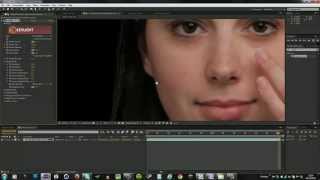

Obviously you cannot expect this technique to be as efficient as a conventional green screen, but in most cases, it will be more than enough to get things done. Precompose and add the video over the background you need to. As you’ve probably imagined the effect will key out everything that is identical in the two clips, except for your talent. Inside the settings of the effect point the difference layer to the empty shot. Then, inside After Effects, pick the “Difference Matte” effect, and apply it to the clip with the subject.

Have your talent perform the action and shoot again a clean plate without moving the camera. The only requirement for this method is to have the scene filmed with a tripod.

It could be for lack of space or time, be as it may, let’s take a look. Jordy Vandeput of has a bag filled with tricks to achieve a similar result even when constricted by a tighter budget, or when simply it becomes impossible to set up a green screen. Luckily, there are some cheaper alternative techniques to consider, especially when you are in a pinch. Selecting a region changes the language and/or content on you think of big blockbusters movies, those huge tentpole franchises like the Avengers and others of that fashion, the first thing that comes to mind is that huge studio setup rigged in green fabric with big badass lighting fixtures.īut what can small indie productions do when they need to key something but can’t afford the budget to a complete green screen setup? Green and blue have traditionally been the go-to colors used for keying, mostly for the efficiency they provide when it comes to getting the best results without having spills in the garments and dresses of the talents. “Because editing capabilities change every few months,” explains Apley, “it’s important to be continuously learning.” As long as your lighting is set up correctly, there are countless ways to introduce fascinating new backgrounds to your projects within the world of chroma keying.
#ADOBE AFTER EFFECTS GREEN SCREEN PRO#
Keep your eye on the latest tutorials and updates to Premiere Pro through resources like Adobe Live and try out new ways to use Chroma Key tools in your videos. Watch how they did it and see the stunning result of their work. Creative studio Abby Priest experimented to discover whether or not they could use liquid paint as a green screen. In your video editor, cut a simple matte (called a garbage matte) between the person and the edge of the green area, and remove the background beyond the line of the matte.Īnything solid in color can potentially be a screen for a keying project.

Hold the pop-up screen behind the person or object you want to shoot. You can use these to shoot keyable footage on the go. Look for small, fold-out background panels that resemble a round section of green screen. Take it further with creative green screens. Just making that decision will save your project,” says Vavra. “As a beginner, it’s worth renting that hundred or so dollars’ worth of lights. You may also want to use a hair light to create a sharper line between your subject and background. These should be used to light the subject of your video. Next, get a 650-watt light and a 500-watt light, again with diffusion through a softbox or even white bedsheets. Vavra recommends renting two 1000-watt lights for lighting the screen itself and a method for diffusing, like softboxes, to put around them. The best types of lights for green screen footage. “That kit seems like it’s solving all your problems, but it’s introducing an entire world of new problems,” says producer and director Martin Vavra. These types of kits typically include one or two lights sufficient to light your subject only, which will create a patchy background that will be time-consuming and difficult to remove in your video editor. Cheaper green screen kits you can buy online are not going to cut it on their own.


 0 kommentar(er)
0 kommentar(er)
